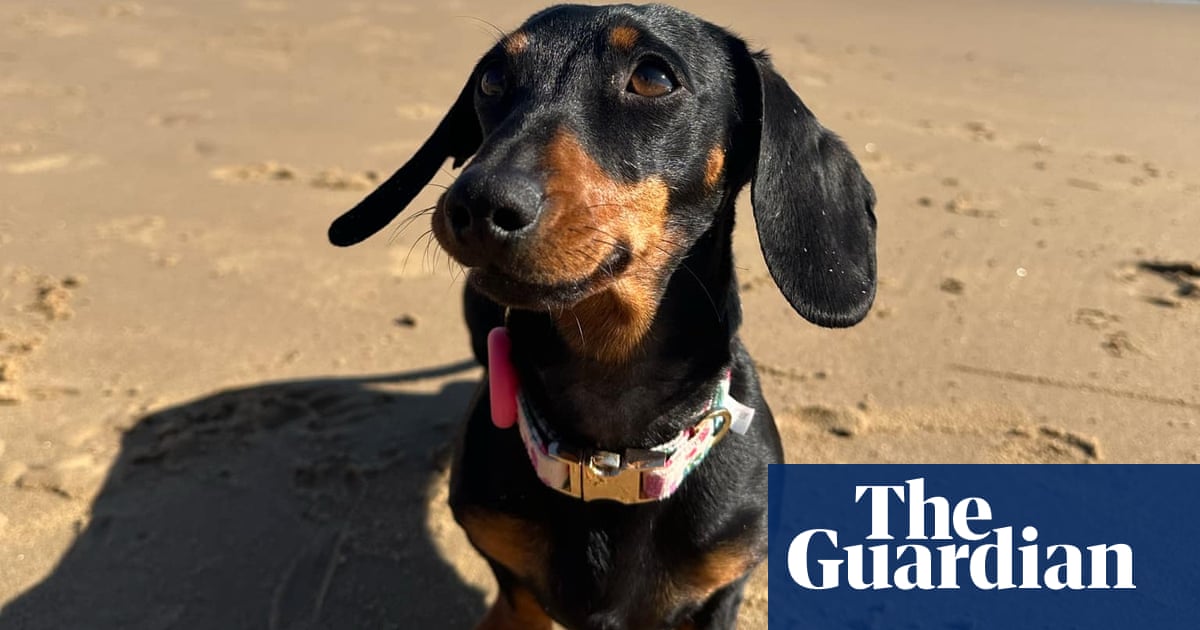Exhausted and relieved, the Kangala Wildlife Rescue team have revealed precisely how theyfinally caught Valerie the dachshund, after 529 days on the run in Kangaroo Island, South Australia.
The Kangala directors, Jared and Lisa Karran, were excited to share the news that Valerie had been secured, but they were also extremely careful not to let the small dog escape from a specially designed cage.
“There was no way we were letting that sausage dog run away on us again,” Jared said in an update posted tosocial media. Valerie’s owners, Georgia Gardner and Josh Fishlock, are said to be “over the moon”.
The Kangaroo Island-based wildlife rescuers designed a special cosy trap – complete with a webcam and remote trigger system – to lure Valerie in.
Kangala describedit as “like her own little room with her toys and bed from home, mum’s clothing, hidden food and challenges to keep her entertained”.
Over about a fortnight, they gradually added familiar items, starting with Valerie’s toy.
While the dachshund didn’t recognise things immediately, these were little moments “clicking her back into calmness”.
“So she grabbed the toy and thrashed it around.”
Later, they added “more and more” strips of a T-shirt worn for 12-hour shifts by her owner, Georgia.
Once Valerie was comfortable coming in and out of the trap, it was just a matter of waiting for her to return and be in the right position, Jared said. “We finally got that opportunity.”
The tiny 4kg dog came in and rummaged around for hidden food stashes, eventually ending up in the back corner of the cage.
At that moment, Jared pressed the button and remotely dropped the door. “Thankfully it all worked perfectly.”
He said Valerie handled her capture well, she “took it in her stride”. And, after initially running around, trying to find ways out, she went into her crate and took a nap.
“She just curled up and went to sleep.”
The Kangala team expected Valerie to be in survival mode – called “lost dogs syndrome” – a stress response that helps a dog fend for itself.
“Her mental health was one of the biggest components we were worried about,” Lisa said.
Along with the familiar items and scents, the rescuers were careful to take things slowly once Valerie was in the trap.
“Normal things, like houses, humans, scents, other animals. These are all things that need to be reintroduced and relearnt.”
Lisa said she wore Georgia’s T-shirt down to the cage. “The idea is just to sit,” she said. “Don’t make direct eye contact. Have your posture either lying down or shrugged or low, and you just wait.”
Amazingly, Valerie didn’t shy away. “She was up at the front, barking and communicating with us.”
Food was also a big thing, Lisa said.
“Of course, we had her favourites – roast chicken and her favourite dog food as well – they were the first things to help her recognise that we were safe and that we were not a threat.”
“She looks quite big on the camera. When I saw her in real life, she is tiny. She’s got, like, an inch clearance under her belly, tiny little legs,” Jared said.
Now out of the cage, Valerie was wearing a special “escape proof” harness, to make sure she didn’t slip away again.
Valerie’s owners, Georgia and Josh, were said to be “over the moon” when they heard the news their dog was secured and would be home soon.
First, there would be at least a week on the island for Valerie to decompress.
“We want to return her to her beautiful owners the best way possible, and not cause her any more trauma or stress. Because undoubtedly out there in 16 months she would have gone through a lot.”
